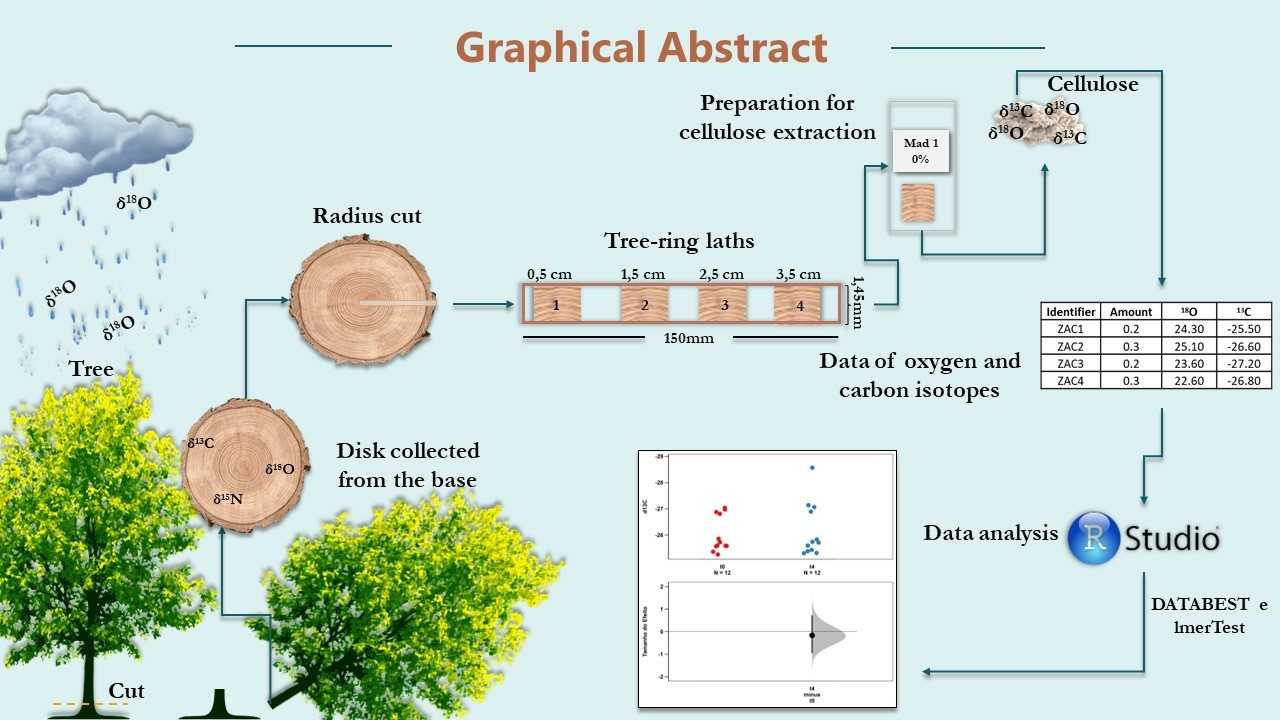Stable isotopes of oxygen and carbon in growth rings: A comparison between different reaction times for obtaining α-cellulose.
DOI:
https://doi.org/10.36524/ric.v9i3.2165Keywords:
Wood chemistry, stable isotope δ13C, stable isotope δ18O, wood traceabilityAbstract
The δ13C and δ18O isotopes are geoclimatic and environmental indicators and are used as wood tracking tools. There are numerous methodologies for obtaining cellulose, which is the material used for isotopic analysis of woody material, but the extraction times are often too long, making the analytical process time-consuming and, in some cases, unfeasible. Our objective is to compare different extraction times and determine if they interfere with the isotopic signal for carbon and oxygen. Four procedures were performed to obtain cellulose at different times, 48 and 6 hours, for extractive removal. The first step involves the removal of extractives in the following sequence: (1) alcohol/toluene (1:1), (2) alcohol, (3) acetone, and (4) water. The delignification process was carried out in two sequences: (1) sodium chlorite and glacial acetic acid for 6 hours and (2) sodium chlorite for 1 hour. Hemicelluloses were removed using a 17% sodium hydroxide solution for 1 hour with three repetitions. α-cellulose was obtained in a 10% glacial acetic acid solution, and at the end of the treatment, the samples were dried at 70°C for 2 hours. For isotopic analyses, the samples were dried, weighed, and subjected to a mass spectrometer for analysis of the isotopic ratio of 18O/16O and 13C/12C. The results suggest a tendency for the extraction time of the wood extractives to interfere with the reading of the δ18O isotopic signal, which was not observed for δ13C.

Downloads
Published
Issue
Section
License
Copyright (c) 2023 Revista Ifes Ciência

This work is licensed under a Creative Commons Attribution-NonCommercial-NoDerivatives 4.0 International License.
Autores que publicam nesta revista concordam com os seguintes termos:
- Autores mantém os direitos autorais e concedem à revista o direito de primeira publicação, com o trabalho simultaneamente licenciado sob a Licença Creative Commons Attribution que permite o compartilhamento do trabalho com reconhecimento da autoria e publicação inicial nesta revista.
b. Autores têm permissão e são estimulados a publicar e distribuir seu trabalho online (ex.: em repositórios institucionais ou na sua página pessoal) a qualquer ponto antes ou durante o processo editorial, já que isso pode gerar alterações produtivas, bem como aumentar o impacto e a citação do trabalho publicado (Veja O Efeito do Acesso Livre).


